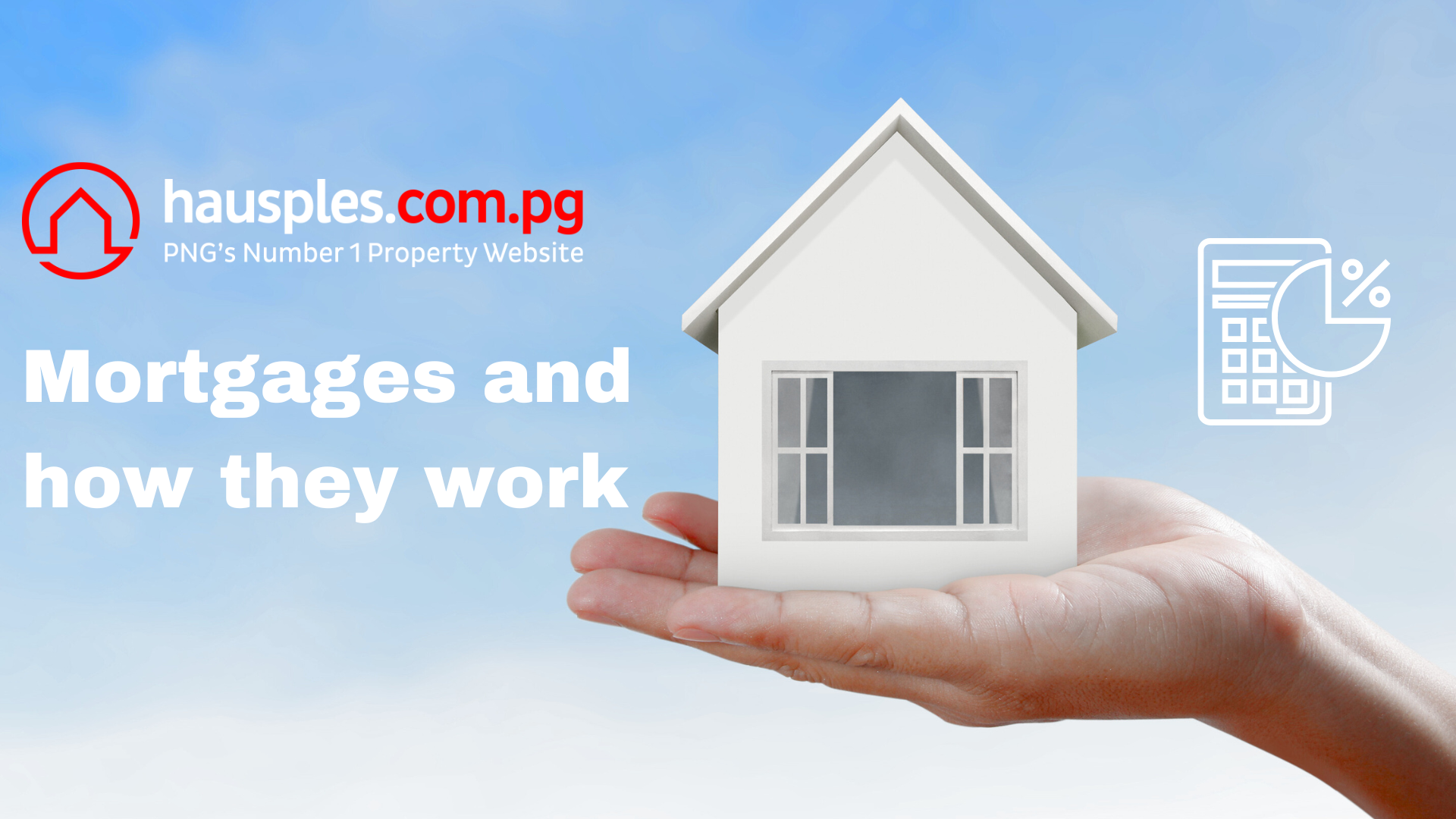Taking out a mortgage is an important financial decision anyone will ever make. Understanding the processes involved and what you are signing up for is vital.
What is a mortgage?
A mortgage is a long-term loan that gives borrowers the money they need to buy or refinance a home. Mortgages offer various terms and the repayment time usually ranges from eight to 30 years. Repayments are done in monthly installments and include both interest and principal payments. As a borrower, when you sign an agreement with a lender, you give the lender the right to resell your property if you do not keep up on your repayments.
How does a mortgage work?
When you get a mortgage, you have a repayment term to pay off the total loan amount. Typically, most borrowers pay in monthly installments which include interest and principal. Mortgages depend on market conditions which means if they drop, borrowers might refinance replacing their existing loan with a new one.
In PNG, most people rely on down payments and their eligibility for a loan to buy property. Most people use their housing advances from their superannuation savings as a down payment and borrow the remaining balance.

Types of mortgages
There are different types of mortgages and they come in various forms, according to Investopedia. It is important to understand what works for you.
Fixed-rate mortgage
A fixed-rate mortgage is where the mortgage interest is the same throughout the loan term. This kind of mortgage usually attracts long-term repayment loans. In this kind of loan, you get a fixed monthly payment amount including loan balance, interest rate, and the time it would take to complete the loan.
Adjustable rate mortgages
This type of mortgage is affected by interest rate fluctuations depending on market conditions. Adjustable-rate mortgages (ARMs) offer fixed interest rates for a period before transitioning to annual adjustments. This flexibility, however, poses inherent risks. Uncertainty regarding future monthly payments complicates long-term financial planning. This uncertainty can strain affordability, emphasizing the high-risk nature of ARMs.
Home equity loans
Home equity loans provide homeowners with access to funds based on the value of their property, offering flexibility and lower interest rates, unlike other types of loans. Equity is the difference between the current market value of the home and the amount the homeowner still owes on the mortgage. However, there is also the risk of losing the property if the borrower defaults on payments. A home equity loan is only necessary to cover outstanding expenses.
Interest-Only loans
This is a mortgage loan where the borrower only pays the interest for a specific period. After this time, the mortgage loan was adjusted back into regular payments. Although it might offer borrowers some relief, they should be prepared for the potential of higher repayments.
Balloon loans
A balloon loan is a type of loan that is not fully paid off over its term. Balloon loans involve borrowers making small monthly payments over a defined period, often with initial payments covering only interest, culminating in a substantial "balloon" payment at the term's conclusion. This final payment is typically larger than previous payments and is intended to pay off the remaining principal. Balloon loans are commonly associated with mortgages.These loans are suitable for short-term financing needs or situations where borrowers anticipate having substantial funds available at the end of the loan term to make the balloon payment. However, they carry significant risk because borrowers must be prepared to either make the large final payment or refinance the loan at that time. If funds are unavailable or if market conditions shift unfavorably, borrowers may encounter financial strain or default..
Refinance loans
Refinance loans give you the option to get a second loan to pay off your existing loan. However, this is an expensive exercise but the process helps you to pay off your existing loan. In other words, these two loans cannot be alike. For example, you cannot obtain a new fixed-rate loan to settle an existing fixed-rate loan. Instead, the new loan can be a fixed-rate option to pay off your current adjustable-rate mortgage.

Getting a mortgage loan
Eligibility can vary with the mortgage type but most lenders look at your credit rating, income, employment and age, and the property’s value. Based on your income and credit rating history, lenders verify your repayment capacity before approving any loan. This underscores the importance of preparing the required documents for lender review. Lenders assess your existing debts to ensure your income can support all your loans, including the new application.
They determine your debt-to-income ratio, revealing what portion of your monthly income goes toward loan payments. According to Forbes, your debt to income ratio is the amount you owe in monthly debt payment compared to your income. Borrowing less reduces the lender's risk, as they can swiftly recover their investment by selling the property. A larger down payment also deepens your commitment to the property and motivates you to avoid foreclosure.
The lender will tell you how much you can borrow but how much you want to get is a personal decision. Ultimately, this is a personal decision, placing you in the role of decision-maker regarding how much you wish to borrow, the type of loan you prefer, and the size of the down payment you can manage.
These factors play a crucial role in determining your monthly payments and the total interest you'll pay over the loan's term. Opting for the maximum loan amount can be risky, especially if you're seeking flexibility in your monthly payments.
Making a decision
To find what suits your needs, you need to assess your financial situation. Consider your income, credit history, assets, and savings, and research different mortgage options and lenders. The bottom line is to know what is right for you.




Comments